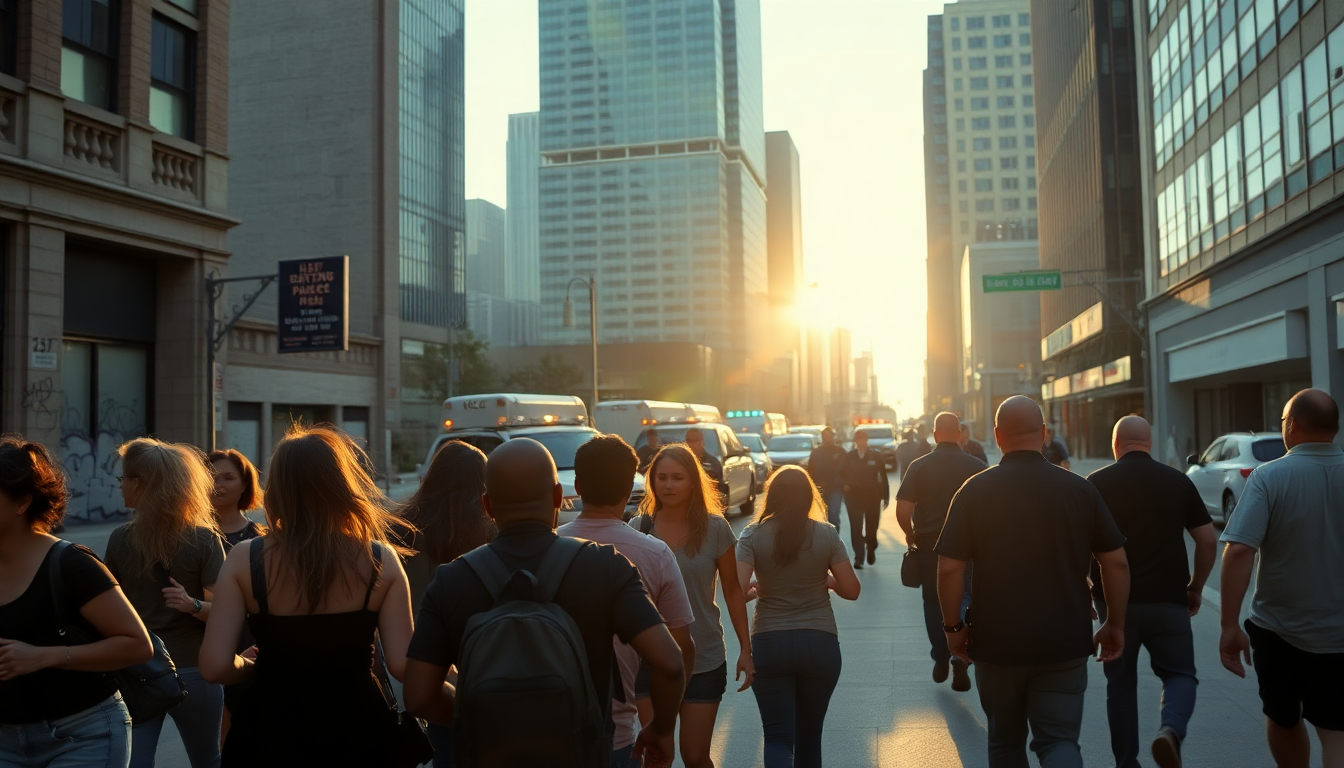Table of Contents
In the early hours of July 26, 2025, downtown Cincinnati became the scene of a shocking incident involving street violence. As the sun began to rise, chaos erupted, leaving several people injured and igniting serious concerns about public safety in our urban spaces. Footage of the brawl quickly spread across social media, not just for its graphic nature but also for the deep-seated issues it revealed regarding community relations and how law enforcement responds to such situations. This incident is a vivid reminder of the ongoing challenges cities grapple with in their efforts to maintain peace and security.
Incident Overview
The confrontation unfolded at the bustling intersection of Fourth and Elm streets, a hotspot known for its nightlife. It all kicked off after a 911 call reported the chaos, which involved a group of individuals, some of whom were heard using racial slurs as the situation escalated. Authorities later confirmed that eight people were involved in this fracas, with one individual being classified as a victim, which adds layers to the narrative surrounding the incident.
A 45-year-old man, whose identity has been kept under wraps due to his victim status as protected by Marsy’s Law, has since been charged with disorderly conduct. This law is designed to safeguard the privacy of crime victims, and it raises important questions about the balance between transparency in law enforcement and the rights of those affected by crime. Why is it so crucial to protect victim identities in cases like this?
Legal Consequences and Community Impact
As the investigation continued, the Cincinnati Police Department announced charges against several suspects involved in the violent altercation. Among them was Gregory Wright, 32, who faces serious accusations, including aggravated riot and robbery for allegedly snatching a necklace from a victim during the chaos. The details in the criminal complaint paint a concerning picture, where not only physical violence but also theft seems to rear its ugly head during public disturbances. What motivates individuals to act out in such extreme ways?
This incident isn’t just a one-off occurrence; it highlights a growing trend of street violence in many urban areas. The involvement of multiple individuals and the rapid spread of footage on social media underscore a societal issue that calls for our attention. How the community responds to this violence will be pivotal in shaping the future safety and cohesion of the neighborhood.
Broader Implications for Urban Safety
The Cincinnati brawl serves as a critical case study regarding urban safety challenges that cities across the nation are facing. With public spaces increasingly becoming settings for violence, local governments and law enforcement agencies must seriously reevaluate their strategies for maintaining order. This means not only boosting police presence but also implementing community engagement initiatives aimed at tackling the root causes of such violence.
Community leaders and residents need to band together to foster dialogue and promote understanding to help prevent future incidents. The escalating trend of violent encounters in public spaces calls for a collective approach to safety that encompasses education, outreach, and support services for those at risk. How can we build a safer environment for everyone?
As Cincinnati moves forward, the lessons learned from this incident will be essential in shaping policies that prioritize public safety while also respecting the rights of individuals involved. Striking a balance between enforcing the law and building community trust is delicate but fundamental for sustainable urban living.


